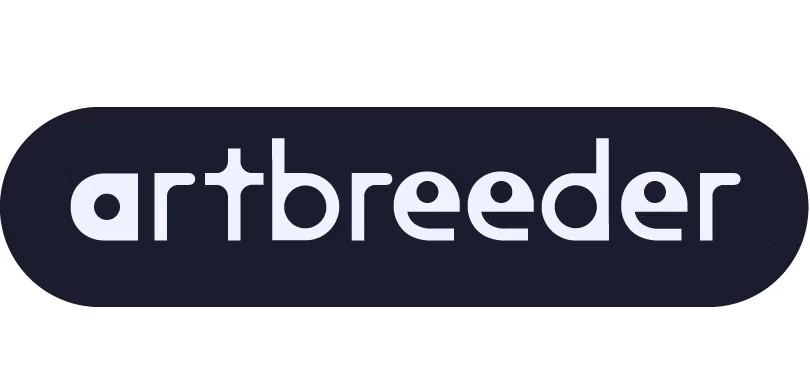The field of generative AI has grown significantly in recent years, offering new possibilities for creativity and innovation in art, music, and design. From creating realistic images to composing music, generative AI has brought about a new era of creativity and innovation.
Generative models have been around since the 1950s, but the field of generative AI has really taken off in the last decade. Early attempts at generative models focused on rule-based algorithms that produced limited results. Now, with the rise of neural networks and deep learning, advanced generative models have become feasible.
The Emergence of Generative AI
As generative AI models became more powerful, a new category of applications emerged. Artists and designers began using AI models to create new forms of art, while businesses started using AI-generated content to save time and money.
Here’s a list of some of the most popular generative AI apps that are making waves in the world of art, music, and design. This revolutionary software implements artificial intelligence to produce anything from realistic visuals to orchestral soundscapes. From AIVA to GANBreeder, these generative AI applications offer nearly limitless potential for innovation and creativity.
1. GPT-3
Generative Pre-trained Transformer 3 (GPT-3) is a state-of-the-art natural language processing model created by OpenAI. Released in 2020, GPT-3 builds on its predecessor, GPT-2, and is known for its remarkable ability to generate human-like text. It can answer questions, complete sentences, translate languages, and even create stories based on a simple prompt.
GPT-3 is trained on a massive dataset with a staggering 175 billion parameters, and it can generate text in multiple languages. Its ability to generate coherent and contextually appropriate responses has led to extensive experimentation in the field of artificial intelligence.
GPT-3’s zero-shot learning capability is one of its notable features. It can perform a task that it has never been explicitly trained for, making it highly versatile and flexible. Its approach to language learning is based on exposure to large datasets and their patterns, making it one of the most sophisticated deep learning models available.
GPT-3’s applications range from language translation, writing apps, and chatbots, to virtual assistants. Beyond these, the model has inspired numerous developers and researchers to create novel applications that further extend its capacities.

2. DALL·E
DALL·E is a generative AI algorithm developed by OpenAI that can create stunning images from textual descriptions. Released in January 2021, it has grabbed the attention of the tech and art community alike, due to its highly detailed and photorealistic images.
DALL·E is built on the GPT-3 framework with 12 billion parameters and incorporates both natural language processing and deep learning to generate images. It can take textual input descriptions such as “an armchair in the shape of an avocado” and produce an image that precisely matches that description. It is also capable of handling complex instructions and creating images that require different perspectives or lighting conditions.
One of the most incredible things about DALL·E is its ability to understand abstract concepts and metaphorical language in image descriptions. For instance, it can generate an image of a baby elephant sitting in a giant teacup, or a two-story building shaped like a croissant.
DALL·E has numerous practical applications ranging from aiding photo-realistic product design to creating visualizations for scientific data. Additionally, it can help designers come up with unique and innovative ideas for novel designs.

3. Artbreeder
Artbreeder is an AI-powered art platform that offers a new approach to art creation. It is a collaborative platform that allows artists and designers to generate, combine and evolve digital art using Generative Adversarial Networks (GANs) and other deep learning techniques. Launched in 2019, Artbreeder allows users to experiment and merge DNA from various art genres, styles, and mediums, creating new and innovative artworks.
Artbreeder’s AI algorithms allow users to assemble creative genetic material from existing artworks. They can begin with an initial work and mutate, blend it with other images, or add on the existing features to evolve new designs. Artbreeder’s AI offers recommendations based on users’ input, guiding the creative process to elegant yet entirely unique designs.
Artbreeder’s unique and intuitive interface enables users to produce a vast array of distinct visual art and design. It has catered to artists, designers, illustrators, and art lovers. It has inspired new art movements and new ways of expressing creativity digitally.
Artbreeder has a wide range of practical applications, including designing video game characters, UI designs, or branding materials. Its endless versatility not only saves significant time during the creative process but also enables designers and artists to discover completely new design aesthetics.

4. Amper Music
Amper Music is an innovative platform that utilizes the power of AI to enable users to generate personalized music tracks. Launched in 2017, Amper Music uses deep learning algorithms to create personalized soundtracks that match the mood, genre, and tempo of any project or media.
Amper Music provides users with the option to select from a diverse range of pre-made templates and genres, empowering them to create customized music tracks with ease. They can then use the app’s intuitive interface to customize the track to fit their desired sound and style. The AI algorithm generates new music loops or individual tracks that fit the rhythm and tone of the user’s creation, making it unique.
Amper Music’s most notable advantage is its speed. The platform automated the time-consuming process of creating music tracks, allowing users to focus on other aspects of their project. AI algorithms optimize audio composition and cutting tracks as per the project’s requirements. This consistency and speed can be important in a variety of applications like video production, and content creation that demand fast production times.
Amper Music’s AI algorithm can mimic different music genres and styles to produce unique sounds. From classical music to electronic dance music, users can select the genre that best fits their project’s needs. It makes music composition accessible to anyone, regardless of their previous musical experience.

5. RunwayML
RunwayML is an intelligent machine-learning platform that offers a new approach to creating generative models. Developed in 2018, it aims to democratize artificial intelligence by offering a user-friendly interface that allows users with little to no experience in machine learning to create their generative models.
RunwayML works by connecting to a range of generative models like GANs, VAEs, and LSTMs, it converts the models into interactive applications. And then the AI algorithm generates visual or audio data in response to user input. Using machine learning and artificial intelligence, it offers users a powerful new creative tool to generate highly unique and personalized outputs.
The platform’s unique feature is the ability to leverage the latest AI models to build intuitive applications like Style Transfer, Text-to-Image Generation, and many more. The application also offers sample code and pre-built models to help users get started, and with RunwayML, users can experiment with machine learning in new and exciting ways.
Another unique feature of RunwayML is its community aspect, where users can connect with other creatives in the platform’s community. Often, members share techniques, datasets, and workflows, fostering a collaborative spirit toward AI-powered creative projects.
RunwayML is an intelligent machine-learning platform that allows users to create generative models. It features a friendly user interface and connects to a wide range of AI models, including GANs, VAEs, and LSTMs.

The Benefits of the Emergence of Generative AI Apps
Generative AI apps have transformed the creative landscape, offering new possibilities and approaches to art, music, and design. With the help of deep learning frameworks and natural language processing, these apps can generate realistic images, compose orchestral music, and create lifelike text.
These generative AI applications have many crucial implications. For instance:
New Art Forms: Generative AI apps have given birth to new forms of digital art, making it more accessible for everyone. The use of these apps doesn’t require any specific technical training, which encourages more creative and artistic thinking. It allows artists to look beyond the limits of human imagination and explore new possibilities.
Cost and Efficiency: Generative AI apps have helped companies reduce costs and increase efficiency in several applications. For instance, they can generate custom music, visual designs, and other artwork an order of magnitude faster than a human can. Automated generation saves not only time but also helps in earlier product launches, leading to an increase in company ROI.
Innovation and Creativity: Generative AI apps offer developers and researchers a new way of thinking about deep learning, modeling, and AI advancement. One of the advantages of AI-powered apps is the capability to enhance and adjust the algorithms over time. It leads to more innovation in AI and offers researchers a way to solve the most challenging problems.
In conclusion, generative AI apps are transforming the way we create and experience art, music, and language. From music composition to digital painting, these AI innovations are generating tremendous possibilities for innovators, researchers, and companies alike. With their continued development and integration of newer algorithms, we can expect even more exciting applications in the future.
